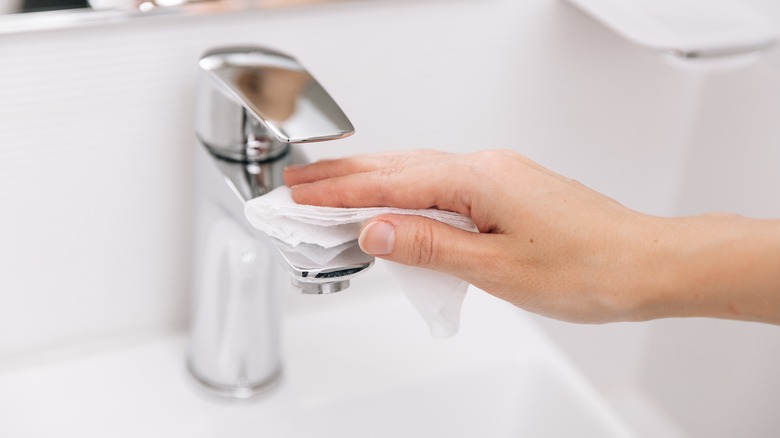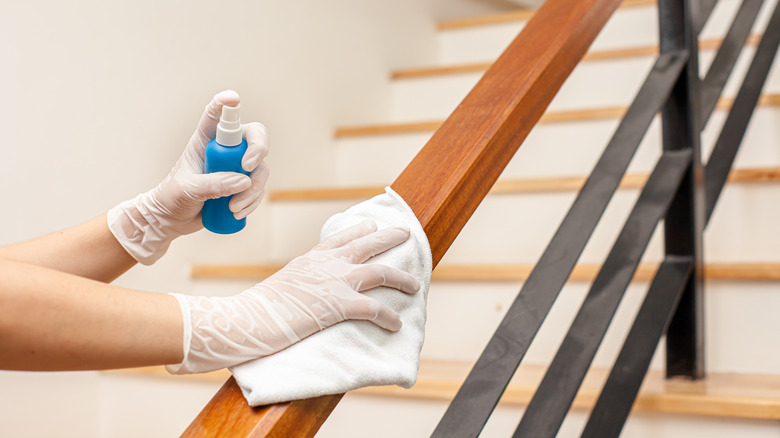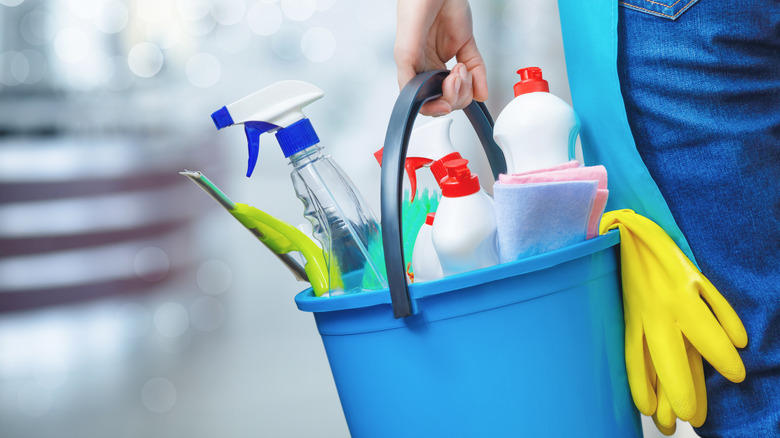Michael Rubino Reveals The Best Ways To Remove Household Mold — Exclusive
The sad fact is that the best way to prevent household mold problems is to never let them start in the first place. This is because household mold is notoriously difficult to remove completely — even if you manage to remove all visible mold, microscopic mold spores and roots can still remain and continue to cause problems. "You can't just slap a cosmetic band-aid on an indoor contamination issue," explained mold remediation specialist Michael Rubino. "The growth will grow back or toxic particles will continue to exist in the space."
And this can be bad news for your family's health. "[The] immune system will work to continually get rid of [airborne mold spores], but it can get overwhelmed and/or malfunction, leading to health issues," Rubino said. He added that while some people may be relatively unaffected by mold, others can suffer serious chronic ailments, including allergies, hormone and fertility issues, and flair-ups of pre-existing immune disorders. This means if you do encounter small amounts of household mold in your home, it's critical you remove it quickly — and completely. (If you discover a bigger mold problem, it's best to call a professional mold remediator.) In an exclusive interview with Health Digest, Michael Rubino shared his best tips for removing mold from your home.
Different materials require different cleaning strategies
Household mold can contaminate more than just walls and moist spaces — its invisible spores can settle anywhere in your home, including on furniture and carpeting. Michael Rubino identified three basic surface types, each of which requires a different cleaning approach: porous surfaces that absorb liquid, such as towels, clothing, and carpets; non-porous surfaces on which water pools, such as sealed countertops and glass; and semi-porous surfaces, which absorb some water, such as unfinished wood and leather.
Porous materials, Rubino said, should be thoroughly vacuumed before being machine washed or hand-cleaned with a botanical laundry additive, such as EC3. "That being said, the absolute best option for these items/surfaces is to remove and replace them," he said. Non-porous and semi-porous surfaces should also be thoroughly vacuumed, then sprayed with an EPA-approved cleaning product, such as Benefect Decon 30. Wipe off the cleaner with a microfiber cloth after letting it sit for at least 30 seconds, and repeat the cleaning process at least three times, using a fresh section of the cleaning cloth each time. Semi-porous surfaces may need to be sanded (or otherwise abraded) and sealed after cleaning.
The right cleaning gear is also essential
When cleaning household mold, you want to be sure you're actually removing it from your home, not just clearing off surface mold. From his years in mold remediation and research, Michael Rubino has identified some products you should have in your housecleaning toolkit.
For cleaners, Rubino recommends EPA-approved botanical cleaners that are non-toxic. These will "help lift particles to the surface so that they can be wiped away." For wiping, he recommends microfiber cloths. "These are 100 times better at removing small particles like bacteria, mycotoxins, and mold spores," he said. He added that your choice of vacuum cleaner matters too. "[Use] HEPA vacuum cleaners so that you're actually removing tiny particles from surfaces and not blowing them back into the air," he suggested. "In order to qualify as a HEPA vacuum, the machine must be able to remove 99.97% of dust, pollen, mold, bacteria, and any airborne particles with a size of 0.3 microns."
For more information on keeping your home's air quality safe, visit HomeCleanse and the Change the Air Foundation.



